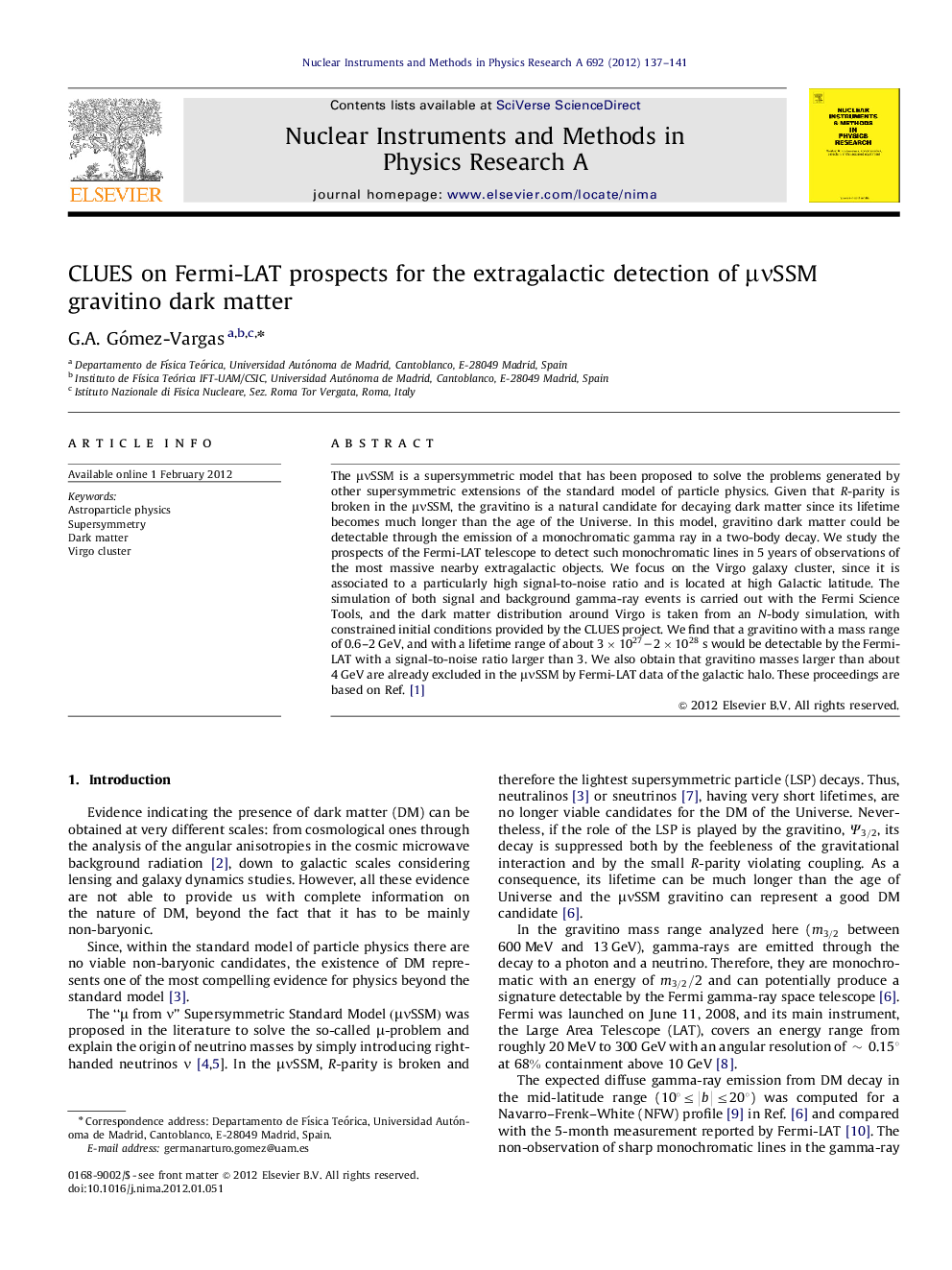| Article ID | Journal | Published Year | Pages | File Type |
|---|---|---|---|---|
| 1823657 | Nuclear Instruments and Methods in Physics Research Section A: Accelerators, Spectrometers, Detectors and Associated Equipment | 2012 | 5 Pages |
The μνSSMμνSSM is a supersymmetric model that has been proposed to solve the problems generated by other supersymmetric extensions of the standard model of particle physics. Given that R -parity is broken in the μνSSMμνSSM, the gravitino is a natural candidate for decaying dark matter since its lifetime becomes much longer than the age of the Universe. In this model, gravitino dark matter could be detectable through the emission of a monochromatic gamma ray in a two-body decay. We study the prospects of the Fermi-LAT telescope to detect such monochromatic lines in 5 years of observations of the most massive nearby extragalactic objects. We focus on the Virgo galaxy cluster, since it is associated to a particularly high signal-to-noise ratio and is located at high Galactic latitude. The simulation of both signal and background gamma-ray events is carried out with the Fermi Science Tools, and the dark matter distribution around Virgo is taken from an N-body simulation, with constrained initial conditions provided by the CLUES project. We find that a gravitino with a mass range of 0.6–2 GeV, and with a lifetime range of about 3×1027–2×1028s would be detectable by the Fermi-LAT with a signal-to-noise ratio larger than 3. We also obtain that gravitino masses larger than about 4 GeV are already excluded in the μνSSMμνSSM by Fermi-LAT data of the galactic halo. These proceedings are based on Ref. [1]
